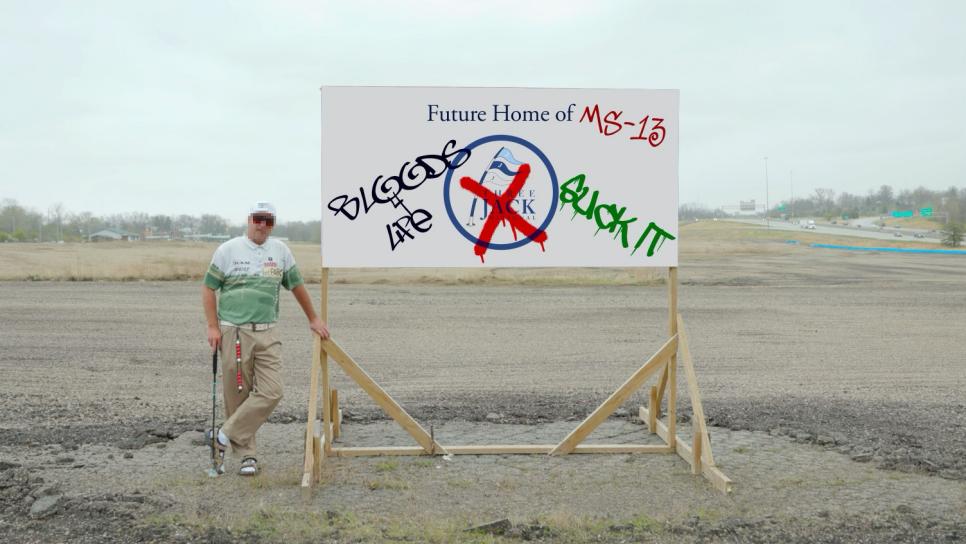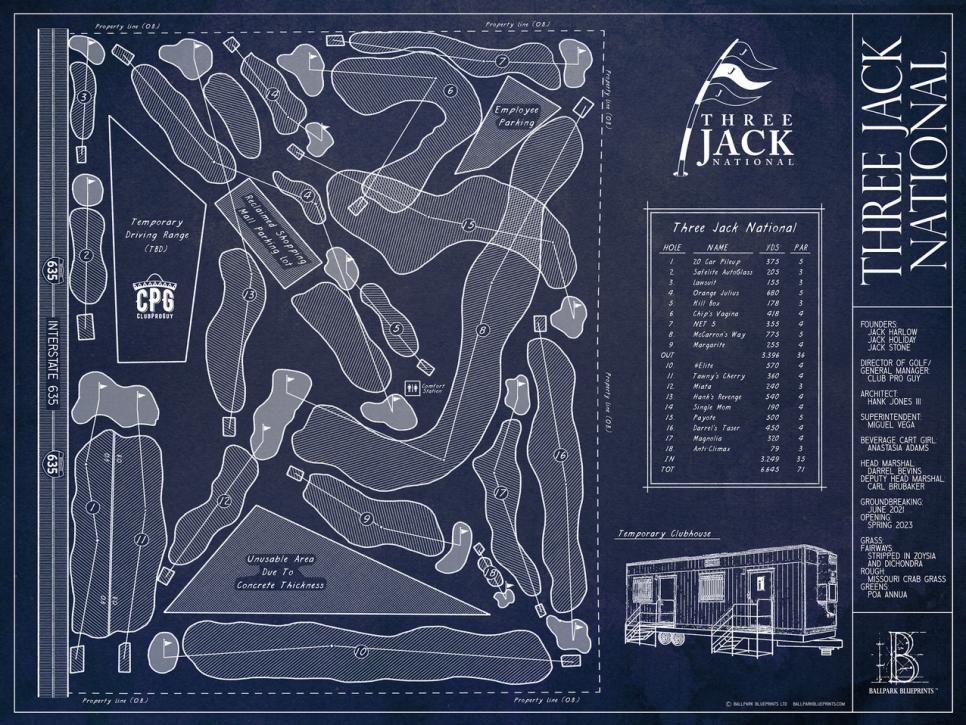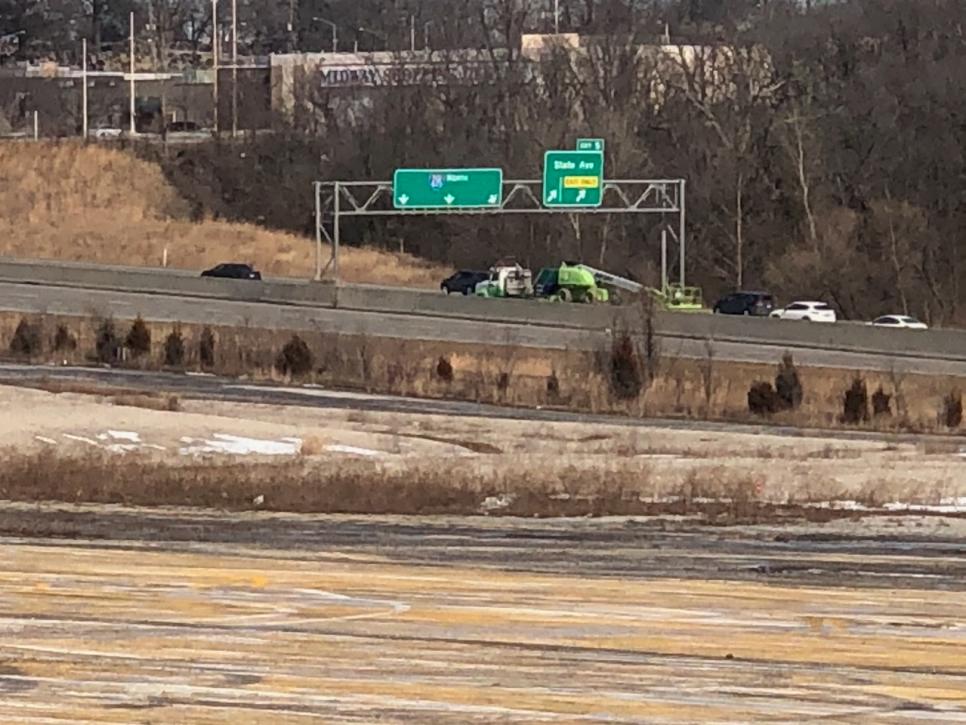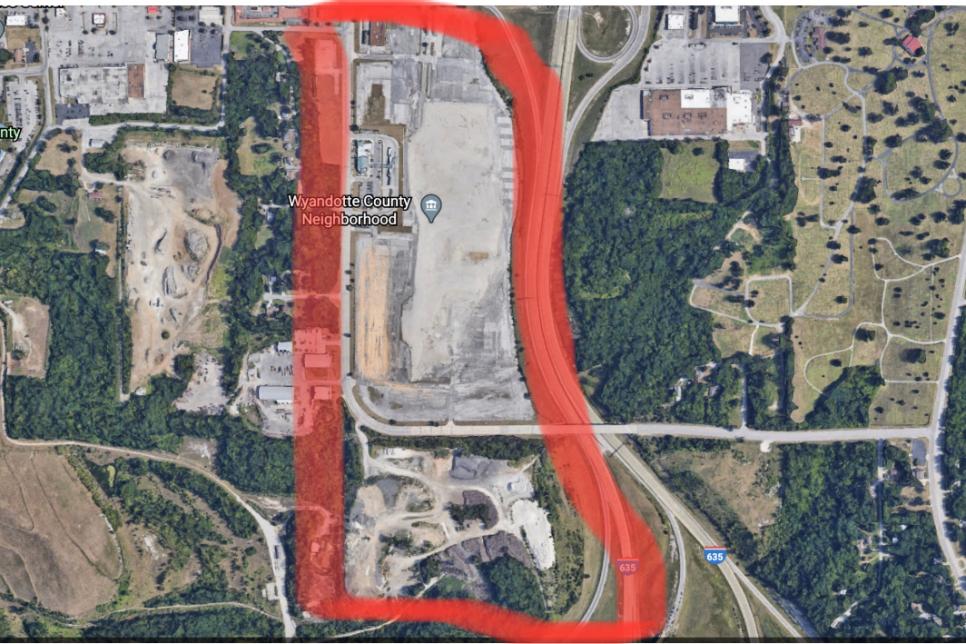It’s been 25 years since the man known as Club Pro Guy played his last competitive round on the Mexican Mini-Tour, a forgettable second-round 91 at the Los Mochis Masters that included a two-stroke penalty for playing a range ball and an unfortunate physical altercation with an elderly volunteer. After a playing career that spanned over a dozen years, resulting in 18 made cuts, $4,000 in earnings and an eight-hole par streak that he still refers to as “the stuff of legend,” “CPG” pointed his 1990 Mazda Miata North, and headed home.
With his prospects as a touring pro fading, CPG returned to his native Kansas City and began his second career as a club professional and highly unconventional swing instructor—on his website he points to a stable of students that includes eight different (net) club champions. He also boasts a proprietary 7-4-7 Swing Thought System®, Stack & Jilt chipping method and even a best-selling instruction book.
With a five-figure salary, a timeshare in Branson, and a generous clothing allowance from Tabasco/Chiliwear, CPG’s critics will say his success to this point has defied logic or common sense. Now he’s about to embark on his most ambitious chapter yet: as a golf course developer.
After rumors of Three Jack National began to surface in 2019, CPG officially announced his plan for the new development in a 2020 press conference many continued to believe was a spoof.
To add to the intrigue, CPG tapped troubled golf course architect Hank Jones to lead the design. Was this like Mike Keiser teaming up with Tom Doak to develop Pacific Dunes? No, not even close. Still, the project has been met with great anticipation. The COVID-19 pandemic coupled with a rash of financial missteps have put the project on hold over the last several years, leaving some insiders and prospective members to wonder when the course will be finished—or if it will be finished at all.
Golf Digest had the opportunity to sit down with Club Pro Guy and Hank Jones for an extended interview to get an update on where the project stands and when the world will get its first glimpse at the most unlikely new property to come along in years.
I met CPG and Hank on the back of the driving range at CPG’s current course, a run-down municipal facility just outside Kansas City. CPG was just finishing up a lesson with a middle-aged woman who was clearly a beginner and Hank was on speakerphone in a heated argument with what sounded like his parole officer. As I stood behind CPG to watch him analyze the woman’s golf swing on his iPad equivalent, I realized he was checking the lines on that night’s NBA Playoff games. The woman was oblivious, however, and continued to aimlessly blade long iron after long iron down the mostly dirt driving range ahead.
After the lesson, CPG got comfortable in his ragged golf cart as Hank and I were forced to sit on upside-down range ball “monster” buckets. Since CPG said he was scheduled to conduct a ladies’ flop shot clinic in less than two hours, I decided to dive in.

Club Pro Guy on the site of the future Three Jack National.
Golf Digest: Congrats on Three Jack National. It looks like an interesting project. Let’s talk a little about the land itself, how this particular piece of property was selected and your overall vision for it.
CPG: When it came to selecting a site for the project, I was not willing to compromise, which is a trap I think many prominent golf course developers fall into. The goal from Day 1 was to find the absolute best piece of foreclosed property in town, become highly leveraged, and then sell thousands of national memberships based on nothing but my word. Which is something we have been fortunate enough to do. The site itself sits on 78 acres of solid concrete, which formerly served as a massive parking lot for a now demolished shopping mall in a blighted area of Kansas City. The east side of the property is flanked by busy Interstate 635, which runs dangerously close to the opening three holes, with the remainder of the club surrounded by an area of Section 8 housing that the Kansas City Star once ominously dubbed “Little Fallujah.” I know Hank will have a lot to say about the design itself, but my overall vision for the project was to create an environment that lives up to our club’s tagline, which is… “Live the semi-private lifestyle you’ve always dreamed of.” And I think as anyone who’s walked this property will tell you, we are well on our way.
I’ve required all of our members to pay a large opening ‘nut,’ and then I’ll immediately start hammering them with monthly dues. However, if I see openings on the tee sheet I’ll go ahead and cram in some weekend warriors for even more revenue.
Club Pro Guy on Three Jack National’s semi-private status
RELATED: America’s 100 Greatest Golf Courses
For this club, you could have gone ultra-private like Cypress Point or Seminole, or you could have gone super high-end public like Bethpage or Pebble Beach. Why did you choose to make it semi-private?
CPG: In a word, flexibility. Private clubs are able to collect high initiation fees, or what I like to call “The Nut,” plus monthly dues, and of course, surprise assessments. Public courses on the other hand rely on a steady stream of daily green fees. I wanted to get the best of both worlds, so I elected to make Three Jack National semi-private. I’ve required all of our members to pay a large opening “nut,” and then I’ll immediately start hammering them with monthly dues. However, if I see openings on the tee sheet I’ll go ahead and cram in some weekend warriors—or what Hank likes to call “public riff raff”—for even more revenue. Oh, and don’t even get me started on corporate scrambles.
Hank, there’s been so much talk about Interstate 635, which runs right along the eastern edge of the property at Three Jack National. What do you say to critics who argue the highway is way too close to responsibly build a golf course?
Hank Jones: I think anytime you design a championship golf course there are going to be elements of the land that present challenges and this property is no different. Is the Interstate way too close to the opening three holes? Yes. Do I think there will be major accidents caused by errant tee balls on a fairly regular basis? Absolutely. But as an architect, I don’t have the luxury to say to my client, “Hey, go buy another 10 acres, we’re too close to the highway and it’s a safety issue.” It just doesn’t work that way. Besides, part of a golf course designer’s job is to create uncertainty and excitement.
What do you mean by that exactly?
Hank Jones: Well, I think TPC Sawgrass is a perfect example of what I’m talking about. The thing that makes the island green on 17 so special is that you HAVE to watch everyone in your group hit that shot. Why? Because there is a “do-or-die” element to it. You can’t look away. That’s what we’re creating here. Those opening tee shots are either in the fairway or they’re going through the windshield of a minivan driven by a single mom trying to get her kiddos to soccer practice.
CPG: Another big benefit to those opening holes is that the club won’t be liable for anything bad that happens. According to our club attorney (Dan “the DUI Hawk” Bailey), there’s a ton of legal precedent that the golfers themselves are solely responsible for errant shots that result in broken windows, etc. So, if something catastrophic were to happen, the liability will be squarely on the member who hit the shot . . . not the club.
This player safety issue is important. At only 78 acres, how concerned are you about space constraints?
Hank Jones: I could see a lot of less experienced designers worry about stuff like that but for me I try to tune it out, because that’s just white noise. As an architect, I have plenty of tools in my toolbox to mitigate a lack of real estate. Including features like double greens, two-way fairways, criss-crossing holes and perhaps most importantly, utilizing the actual golf course as the driving range. Meaning people are literally pounding balls out onto the golf course itself during their warm-up. It’s not ideal, but at the end of the day I don’t think it will be any more dangerous than being struck by a foul ball at a Major League Baseball game.
I noticed the par-3 fifth hole is named “Kill Box.” I’m assuming that’s an example of what you are talking about?
Hank Jones: Yeah, good catch. The green for the par-3 fifth hole is situated directly in line with players going for the par-5 4th in two. So when a group is putting on the 5th green, they better have their heads on a swivel because players in the fourth fairway are going to be nutting 3-woods or drivers off the deck directly over their heads. That’s why we named that hole “Kill Box.” It may not be on opening day, or it may not be the week after, but I can promise you this: A member of this club or one of their guests will eventually be seriously injured or killed on the fifth green.

A blueprint of Three Jack National’s routing, which features multiple criss-crossing fairways. Architect Hank Jones says he defines success by golfers who walk off miserable.
CPG: I just want to reiterate again, when that happens, and I agree with Hank that it WILL happen, it won’t be the club’s responsibility. I just want to again get that on the record.
Hank, describe your process for assessing a piece of real estate. What’s the first thing you do and how do you go about determining a routing?
Hank Jones: Two words: HORSE BACK. When I was a very young designer, I happened to run across a photograph of Tom Fazio on horseback as he assessed a property for a new golf course in China. The sight of him up in the saddle, pointing rolled-up architectural drawings off into the distance just looked so cool to me. I was transfixed. So I said right then and there that if I ever became a big-time architect, I was going to assess every new project on horseback. So that’s what I do.
CPG: Let me interrupt here and say that renting Hank a horse for this project was not only unnecessary, but a huge pain in the ass. It cost me over $200 to rent “Blondie” (a 27-year old quarter horse). To make matters worse, Hank was drunk. And not just “kinda drunk,” I’m talking completely sh*tfaced. So because of that, he foolishly took Blondie up on to the shoulder of the highway to (CPG using air quotes) “get a better look at the first fairway.” Not surprisingly, Blondie got spooked by an 18-wheeler and ended up fracturing her ankle on a mile-marker sign. So not only did I not get my deposit back, but the stable said they were probably going to have to put Blondie down.
If a player walks off one of my designs and says, ‘I never want to play that course again,’ then I feel like I’ve done my job.
Three Jack National designer Hank Jones
Hank Jones: Blondie was a magnificent animal. But back to the topic of routing . . . my general philosophy is ‘nothing really matters.’ And I mean that sincerely. I have a running joke with my assistant (Rafa) where every time he says “Boss, where should the next hole go?” I always say…“Oh, here, there, anywhere”. We always have a good laugh but it’s true, I tend to get my best results when I just willy nilly head off in a new direction. Now, I’ll be the first to admit that at times it can get me in trouble. Like back in ‘04 when I did a par-3 course where we somehow left ourselves with a 2,600 yard-walk between the 5th green and the 6th tee and another course in Texarkana where the 15th green was right next to the clubhouse and the 18th green ended up almost 2 miles away. But those are outliers.
For those out there who aren’t self-described ‘architecture geeks’ and might not be familiar with your work, tell us more about your design philosophy.
Hank Jones: Every time I embark on a new design, I ask myself a simple question: What can I do as a designer to make this golf course as difficult as possible? If a player walks off one of my designs and says, “I never want to play that course again,” then I feel like I’ve done my job. People need to remember that golf is an extremely difficult game and a proper golf course design needs to reflect that reality. I want elite professionals to be frustrated and I want the average amateur player to be miserable.
How does designing a golf course that is overly difficult contribute to growing the game?
Hank Jones: It doesn’t. But then again I don’t really care about growing the game, I’m too busy trying to design iconic golf courses. Hell, check your own magazine’s course rankings list. The highest rated courses are always the hardest courses. As a designer, nothing gives me more satisfaction than seeing a player hit a blind tee shot over the crest of a hill that they think is absolutely perfect, only to find out when they get to their ball it’s in a hazard, or even better, out of bounds. That’s the way golf was meant to be played.
It’s well known that this golf course is being constructed on the site of a now demolished shopping mall. How will that play into the design of the golf course, if at all?

Three Jack National’s proximity to the Interstate has been met with skepticism by critics.
Hank Jones: Any time I design a golf course, the property’s history and lineage is at the forefront of every decision I make. I think a really important part of my job is to be a steward of the land and to maintain the upmost respect for what came before us and that’s exactly what we’ll do on this project. The entire property of Three Jack National is covered with the original dilapidated parking lot from the mall’s original construction back in 1959. We plan to reclaim some of that asphalt for the cart paths which I think is a cool touch. Also, believe it or not, a corner of the original SEARS Tire and Auto Center is still standing, so we are going to turn that into one of our comfort stations. You get the idea. These aren’t huge things, but they are subtle touches that are going to help make this property a bucket list destination.
Between the repurposed parking lot, and the extensive use of cart paths, it seems like you both feel concrete is an underutilized feature at most golf courses. What do you feel like that surface brings to shotmaking at Three Jack National?
Hank Jones: I’ve always utilized large areas of concrete in my designs, mainly by way of cart paths, because it’s so much cheaper and easier to maintain than traditional turf, especially near the green surrounds. It’s a greenskeeper’s best friend. But more importantly, I do it for strategy reasons. I want to put a certain degree of doubt in a player’s mind on all the key approach shots, which I believe is the goal of any great designer. If I can get a player to question whether it’s worth going for the green with a wedge in hand, knowing that missing two yards right will result in a 40-foot high bounce off the cart path into the gunch, then I know I’ve done my job. On the other hand, I also want the player who chunks a shot that lands 10 yards short of the green to have the opportunity to be rewarded with a bounce off the path that settles next to the pin. It’s those types of subtle nuances that are the hallmark of any great golf course. Luckily, this project gives me the luxury of not deciding where to ADD concrete, but where I need to TAKE OUT concrete.
Hank, several of the members Golf Digest contacted prior to this interview point to your substance abuse and legal issues as the main source of the delay in getting the course built. How do you respond to that?
CPG: Let me jump in here because I know Hank will try to minimize this issue. The sad reality is that I can’t keep him on the property for any extended period of time because he’s either too drunk to work or he’s physically in custody. Now in fairness, I’ve had some legal and environmental issues of my own that have caused minor delays, but Hank’s inability to stay out of jail has been the lion’s share of why this course isn’t open yet.
Hank Jones: (audible belch) That’s an exaggeration
CPG: Is it? Well, let’s just run down the list. Since the first time you stepped foot on the property you’ve been arrested for DUI on horseback, public drunkenness during a court proceeding, copper wire theft, DUI while operating heavy machinery, and indecent exposure within 300 feet of a nursing home.
Hank Jones: (readjusting his court ordered GPS ankle monitor) I’ll beat the nursing home beef.
Money comes in and then money goes out. I see a college football line that jumps off the page, and then I have to assess the membership $500 for ‘sod’ when it’s really because the Miami Hurricanes can’t hold a f*cking 4th quarter lead to save their assI
Club Pro Guy on Three Jack National’s creative accounting
CPG: Maybe, maybe not. The bottom line is this project is hanging by a thread and if you get popped for another DUI during construction, we’re in big trouble. The big guy here needs professional help and I hope he eventually gets it. But I think it’s FAR more important that we get this golf course built first. It’s like I tell Hank all the time….Billy Bunkers before Betty Ford.
I hate to bring up another sensitive topic, but we’re told Three Jack National has recruited a number of national members who have already committed a significant initiation fee but are now concerned about the lack of progress. They use phrases like “money pit” and “slush fund.” I’m curious how you respond?
CPG: (laughing) I’m trying to build a world class semi-private golf course here, OK? If I paid attention to all the petty complaints I get from the membership along the way, I’d never get anything done. Sadly, I think a lot of the grievances I hear about are just a sign of the times. We live in a world of instant gratification. Everything is now, now, now! People think they can get in on the ground floor of an elite golf club and Voila! have it built in 4 years. Well guess what? It doesn’t work like that. Whistling Straits took eight years to build, OK? We’re not even halfway to that yet. I’m getting so tired of hearing from members who ask dumb questions like “Why isn’t there construction equipment on the site yet?” or “How have you not even applied for permits yet?” or “I’m in my late 50’s, will I live long enough to play this course?” It’s ridiculous. I am doing everything in my power to bring this project to life but with the combination of Hank’s aforementioned sobriety and legal issues, the property’s massive environmental problems, the shortage of illegal labor, the unpredictable Midwest weather and this damn tax audit, we’re having a little trouble getting out of the blocks. I just wish the membership would recognize that and cut me a little bit of slack.
I think a lot of the members we talked to see the lack of progress and simply want to know where the money went.
CPG: As far as concerns about finances go, my goal is total transparency. But I’ll be the first to admit it’s hard to keep track of everything. Money comes in and then money goes out, and then I give myself a personal loan, and then I try to pay it back, and then I see a college football line that jumps off the page, and then I have to assess the membership $500 for “sod” when it’s really because the Miami Hurricanes can’t hold a f*cking 4th quarter lead to save their ass! You get the idea. In addition to that, everything is more expensive than I thought it would be. Did you know one singular driving range mat costs $180? Think about that for a second. Now multiply that by 20. And that’s just driving range mats! Have you ever tried to rent a bulldozer? It’s over $1,200 plus proof of insurance. No, not $1,200 for the entire duration of construction….$1,200 A DAY! Miniature flagsticks for the putting green cost $35 each, Giza Dream bedsheets for the member cottages are like $200 a bed, shoe-shine equipment is over $350, a Sabona bracelet display case for the pro shop is $200+, I could go on, but you get the idea. The bottom line is when members bitch and complain about random assessments and dues increases, they do so without fully understanding how expensive it is to get this thing off the ground
As you know, many new courses seek attention and validation by hosting a high-level tournament of some sort. How well suited do you think Three Jack would be for elite competition, and where does this fall in your priorities?

CPG: I didn’t embark on this project for “attention” or “validation” as you say, I feel like my reputation as a player over my long career in Mexico took care of that for me. As I’ve stated from the beginning, I’m building this golf course with two main goals in mind: First and foremost is to create an opportunity for me to have a high paying, permanent job with minimal accountability, and second, to build a golf course with the ability to host multiple USGA events and/or major championships. Hell, I would even host one of those goofy LIV events if I had to. The bottom line is I believe we are well on our way to accomplishing both of those goals. The good news is that this is a Hank Jones “Signature” Design, which I think answers any questions the USGA or the PGA of America might have regarding the quality of the golf course. But it takes a lot more than that. In order to host big-time events you have to have an enormous amount of infrastructure in place to handle the massive crowds that would attend say a US Open or a Ryder Cup. For instance, highway access is always at a premium. And as we’ve discussed already, our highway access is second to none. It’s RIGHT THERE. So, from a pure logistics perspective, that checks a big box. As far as amenities go, nearby State Avenue runs east and west along the north side of the property and features a variety of fast-food restaurants and whatnot. Think of it as a “poor man’s” version of Washington Road in Augusta. It has many of the same establishments, but with a much higher crime rate. Lodging is a little trickier. I (personally) wouldn’t stay in any of the motels in the immediate area due to safety concerns, but we would have the ability to run shuttles from the golf course to other areas of the metro before and after tournament rounds. In my experience, people generally don’t mind waiting for buses. In addition to that, Kansas City International airport is less than 30 minutes away and features a private jet terminal for the players. So, this is basically a tournament organizers dream, we just need the powers that be to pull the trigger.
So many clubs these days get pulled into an “arms race” in trying to build out extra features and accoutrements to lure new members—fitness centers, day care, that sort of thing. Do you have anything unique planned for Three Jack?
CPG: Close your eyes and think of the nicest Club Corp facility you’ve ever seen. Now realize that our club will be as nice or even nicer than that. Having said that, there are some financial constraints we have that the “big box” courses don’t have, so we’ve had to ‘outsource’ some of our amenities. For instance, we won’t actually have a pool on-site, but I’ve worked out a reciprocal deal with the Wyandotte County Swimming Pool. So, if our members feel comfortable in a public swimming pool environment, we’ve made that option available. As far as spa/massage facilities go, the local ‘China Massage’ has agreed to give our members a 5 percent discount if they show a 3JN bag tag at the door. Our culinary options will be led by our Greenskeeper’s (Miguel Vega) wife Margarite and will be second to none. You get the idea.
Amenities are nice but make no mistake, Three Jack National will first and foremost be a true golf club—what some people might call a “players’” or a “big boy” club. Think Whisper Rock, but on steroids. If you can’t break (net) par on a fairly regular basis, good luck getting in.
This article was originally published on golfdigest.com




